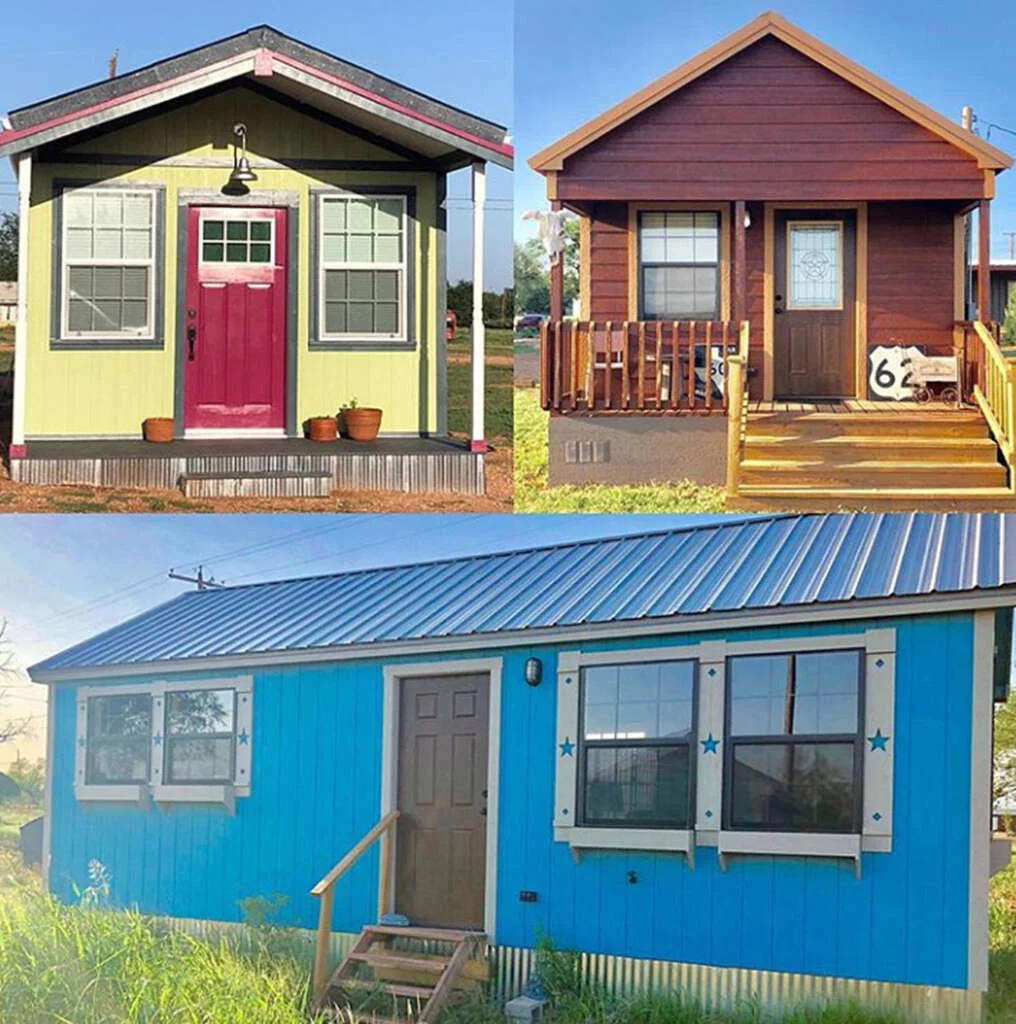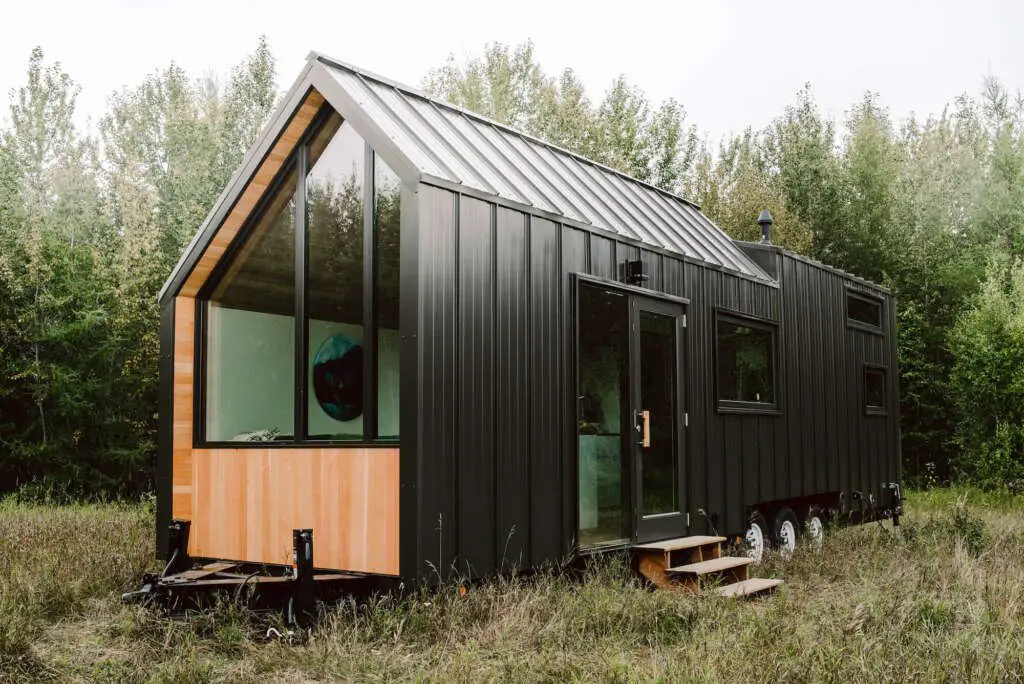Are tiny homes legal in Texas? It’s a question that has been on the minds of many individuals looking to downsize and embrace a more sustainable lifestyle. With their minimalistic charm and affordability, tiny homes have gained popularity across the United States. However, state regulations often dictate what can and cannot be considered a legal dwelling, leaving many wondering if they can legally reside in a tiny home in the Lone Star State. In this article, we will explore the current legal landscape surrounding tiny homes in Texas and provide insight into the options available for those seeking to make these compact living spaces their own.
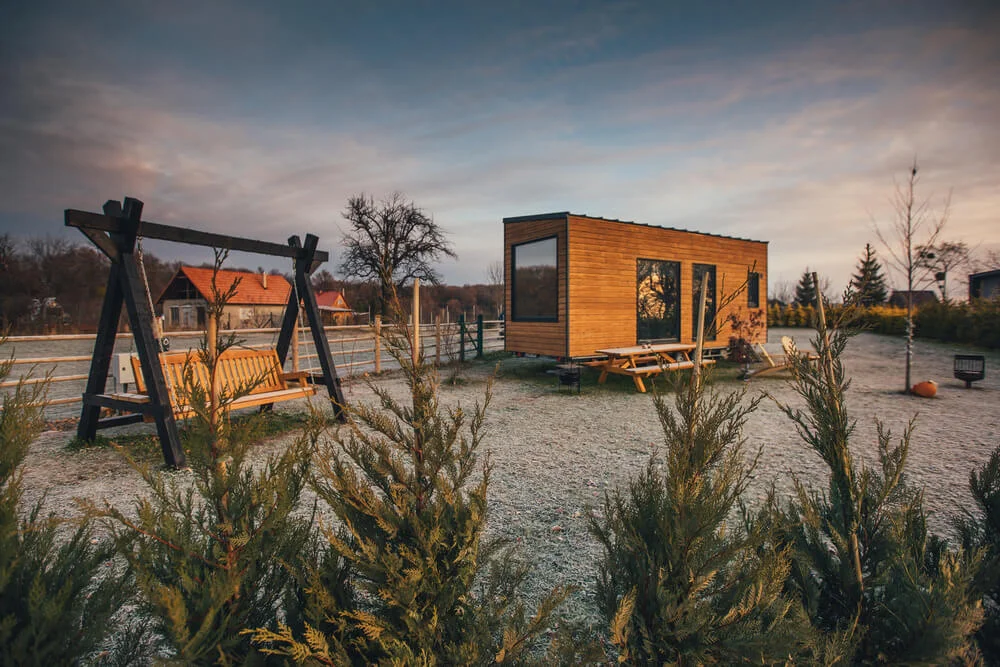
Understanding Tiny Homes
Definition of Tiny Homes
Tiny homes are small, often compactly designed living spaces that typically range from 100 to 400 square feet in size. They are built to maximize functionality and promote a simpler, more minimalist lifestyle. These homes often feature creative storage solutions, multipurpose furniture, and innovative design elements to make the most of the limited space.
Advantages of Tiny Homes
There are several advantages to living in a tiny home. First and foremost, they are significantly more affordable than traditional houses. With the lower cost of purchasing or building a tiny home, individuals can often become homeowners without the burden of a large mortgage. This financial freedom allows for a greater sense of flexibility and the ability to allocate resources towards experiences, travel, and personal goals.
Tiny homes also promote sustainable living practices. With their smaller footprint, they require less energy and resources to heat, cool, and maintain. This reduces both environmental impact and utility costs. Additionally, the compact size of tiny homes encourages a decluttered lifestyle, forcing individuals to evaluate their belongings and prioritize what is truly essential.
Texas Laws and Regulations
Overview of Housing Codes in Texas
While there is no specific legislation in Texas that addresses tiny homes, they are generally subject to existing housing codes. These codes primarily focus on health and safety regulations and are typically enforced at the local level.
Minimum Size Requirements
Texas does not have a minimum size requirement for residential dwellings, which allows for some flexibility when it comes to tiny homes. However, it is essential to consider that the International Residential Code (IRC), which is adopted by most cities and counties, sets minimum requirements for habitable spaces. Compliance with these standards may be necessary to meet certain living standards.
Zoning Laws and Restrictions
Zoning laws can significantly impact the placement and use of tiny homes in Texas. Each city and county has its own zoning regulations that dictate how land can be used. It is crucial to research and understand the specific zoning laws in your desired location to determine if tiny homes are allowed as permanent residences or if they are limited to certain areas, such as mobile home parks or accessory dwelling units (ADUs).
Building Codes and Permits
Building codes and permits are necessary when constructing or installing a tiny home in Texas. These codes ensure that the home meets safety and structural standards. It is essential to work with a licensed contractor or consult with local building authorities to ensure compliance with all relevant codes and obtain the necessary permits before beginning construction.
Challenges and Exceptions
Local Variations in Regulations
It’s important to note that regulations regarding tiny homes can vary significantly from one locality to another. While some Texas cities may have embraced the tiny home movement and have specific ordinances in place to accommodate them, others may have stricter restrictions or may not have addressed the issue at all. It is crucial to research and understand the specific regulations in the area where you plan to live.
Rural vs Urban Areas
In rural areas of Texas, where land is more abundant, there may be more flexibility when it comes to building and living in a tiny home. However, in urban areas, where land is limited and there is higher population density, zoning laws and restrictions may be more stringent. It is important to consider these factors when deciding on the location for your tiny home.
HOA and Neighborhood Covenants
In addition to local zoning and housing codes, it’s essential to be mindful of any homeowner’s association (HOA) or neighborhood covenants that may apply to the area where you plan to live. These agreements can impose additional rules and regulations on the properties within the community, including restrictions on the size, appearance, and use of homes. It’s crucial to review and understand these covenants before committing to living in a particular community.
Off-Grid Living
For those interested in off-grid living, Texas offers more flexibility compared to many other states. With abundant sunshine and vast open spaces, it is possible to set up a tiny home with solar power, rainwater harvesting systems, and composting toilets. However, it is still essential to research and understand any specific regulations or permitting requirements related to off-grid living in your chosen area.
Specific Case Studies
Austin, Texas
Austin has become a hub for the tiny home movement in Texas. The city has recognized the growing demand for tiny homes and has implemented specific provisions in the land development code to allow for tiny home communities and accessory dwelling units. These regulations provide a framework for legalizing and integrating tiny homes into the city’s housing options.
Houston, Texas
While Houston does not have specific ordinances that address tiny homes, there are still possibilities for living in a tiny home within the city. Some individuals choose to place their tiny homes in rural areas just outside of Houston, where zoning regulations may be less strict. Others may opt to locate their tiny homes in RV parks or designated subdivisions that allow for these compact dwellings.
Dallas, Texas
Dallas, like many other cities in Texas, does not have specific regulations for tiny homes. However, there are some neighborhoods that have embraced the concept and are open to tiny home living. It is essential to research and understand the zoning regulations and any potential community restrictions in Dallas before embarking on a tiny home journey.
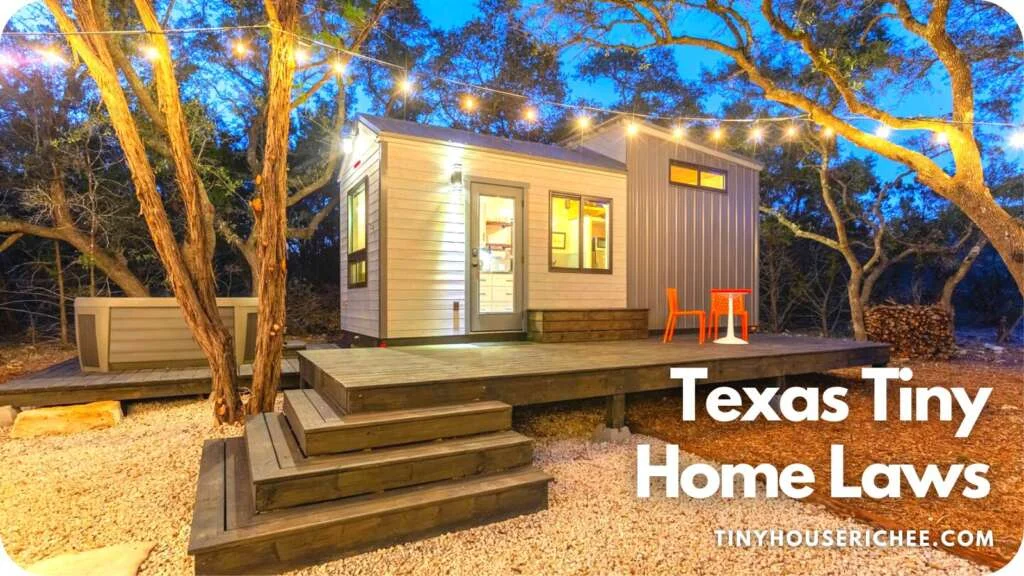
Finding Land and Financing Options
Identifying Suitable Land
Finding suitable land for a tiny home in Texas can be a challenge. It’s important to consider factors such as zoning laws, proximity to amenities, and accessibility when searching for land. Several resources can assist in the search, including online listings, real estate agents specializing in tiny homes, and local government planning departments.
Land Use and Zoning Research
Before purchasing or leasing land for a tiny home, thorough research of land use and zoning regulations is essential. Contacting local planning departments or zoning officials can provide valuable information on any restrictions or requirements that must be met.
Financing Possibilities
Financing a tiny home in Texas can be approached in various ways. Traditional home mortgages are generally not available for tiny homes due to their size and unconventional nature. However, alternative financing options such as personal loans, RV loans, or construction loans may be viable. It’s crucial to explore different financing avenues and consult with lenders who specialize in tiny home financing.
Building and Design Considerations
Energy Efficiency and Sustainable Design
Given their small size, energy efficiency is a crucial consideration in tiny home design. Incorporating energy-efficient appliances, insulation, windows, and renewable energy sources can help reduce utility costs and minimize the environmental impact. Additionally, sustainable design principles, such as using eco-friendly materials and employing passive heating and cooling strategies, are worth considering.
Manufactured Tiny Homes vs DIY Builds
Individuals interested in living in a tiny home have the option of purchasing a manufactured tiny home or building one themselves. Manufactured homes offer the convenience of a turnkey solution, while DIY builds provide the opportunity for customization and cost savings. Each approach has its advantages and drawbacks, so it’s essential to weigh the pros and cons before deciding which route to take.
Architectural Styles for Tiny Homes
Tiny homes come in various architectural styles, ranging from contemporary to rustic. The architectural style chosen for a tiny home should not only reflect personal taste but also take into consideration local design guidelines and regulations. Whether opting for a sleek modern design or a cozy cottage aesthetic, it’s essential to choose a style that fits both the individual’s preferences and the surrounding environment.
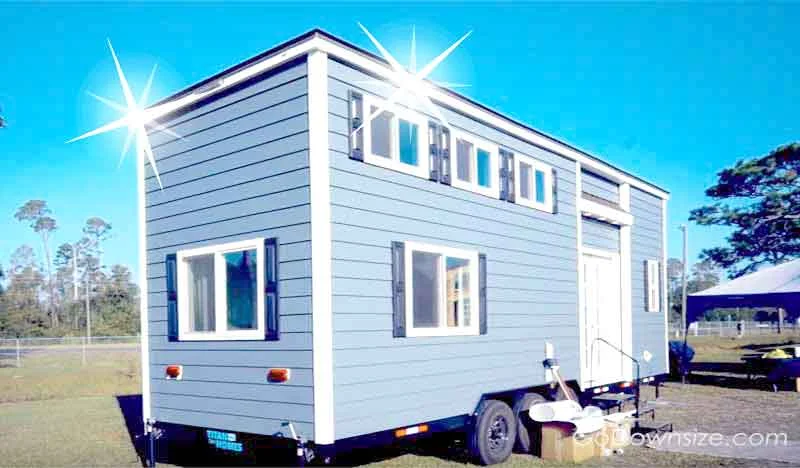
Navigating Permits and Inspections
Building Codes Compliance
Compliance with building codes is crucial to ensure the safety and structural integrity of a tiny home. Working with a licensed contractor or builder familiar with local codes can help navigate this process and ensure all necessary safety measures are incorporated into the design and construction of the tiny home.
Zoning Compliance
Zoning compliance involves adhering to the specific land use regulations and restrictions imposed by local authorities. This includes restrictions on the size, placement, and use of structures on a particular piece of land. Understanding and complying with these regulations is paramount when establishing a tiny home in a specific area.
Electrical and Plumbing Inspections
Electrical and plumbing inspections are typically required when hooking up a tiny home to utilities. It is important to engage the services of licensed professionals to ensure that all electrical and plumbing systems meet safety standards and are installed correctly.
Living in a Tiny Home in Texas
Insurance for Tiny Homes
Obtaining insurance for a tiny home can be challenging, as it is not always recognized under traditional homeowners’ insurance policies. However, there are specialized insurance providers that offer coverage tailored to the unique needs of tiny home owners. It’s essential to shop around and find a policy that provides adequate coverage for the tiny home and its contents.
Utilities and Off-Grid Options
Connecting tiny homes to utilities such as electricity, water, and sewage is possible in many areas of Texas. However, for those seeking off-grid living, alternative options such as solar power, rainwater harvesting systems, and composting toilets can provide self-sufficiency and reduce reliance on conventional utilities.
Tiny Home Communities and Associations
Tiny home communities and associations are becoming increasingly popular in Texas. These communities provide opportunities for like-minded individuals to live together in a supportive and communal environment. They often offer shared amenities, such as common spaces, gardens, and workshops, fostering a sense of community and connection.
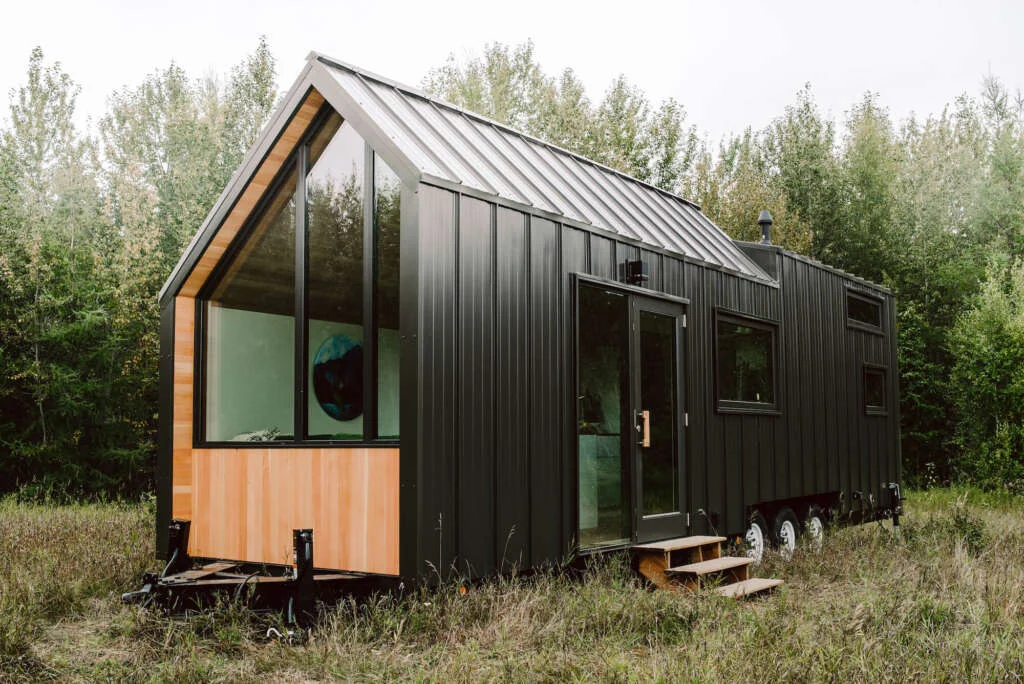
Pros and Cons of Tiny Homes in Texas
Benefits of Tiny Homes
- Affordability: Tiny homes offer a more accessible path to homeownership and financial freedom.
- Sustainability: Their smaller size promotes energy efficiency and reduces environmental impact.
- Flexibility: Tiny homes allow for a simpler lifestyle, with the ability to relocate and travel more easily.
- Minimalism: Living in a tiny home encourages decluttering and a focus on the essentials.
- Community: Tiny home communities provide a sense of belonging and support.
Drawbacks and Limitations
- Limited Space: The compact size of tiny homes can present challenges, particularly for individuals with large families or those who require ample storage or workspace.
- Zoning Restrictions: Zoning laws and restrictions can limit the placement and use of tiny homes, making it difficult to find suitable land.
- Financing: Traditional mortgage options may not be available, requiring alternative financing options that can carry higher interest rates.
- Limited Resale Market: The niche nature of tiny homes can limit resale opportunities and potential returns on investment.
Conclusion
In conclusion, while tiny homes present a unique and attractive option for many individuals in Texas, navigating the legal aspects and finding suitable land can be a complex process. Understanding local zoning laws, building codes, and regulations is essential to ensure compliance and a successful transition to tiny home living. With thorough research, careful planning, and open communication with local authorities, living the tiny home dream in Texas can become a reality.
Looking ahead, as the demand for affordable and sustainable housing options continues to grow, there is hope for future advancements in legislation and regulations that further support the development and integration of tiny homes into Texas communities. With continued advocacy and education, the future outlook for tiny homes in Texas is promising as more individuals recognize the benefits of this unique housing solution.
